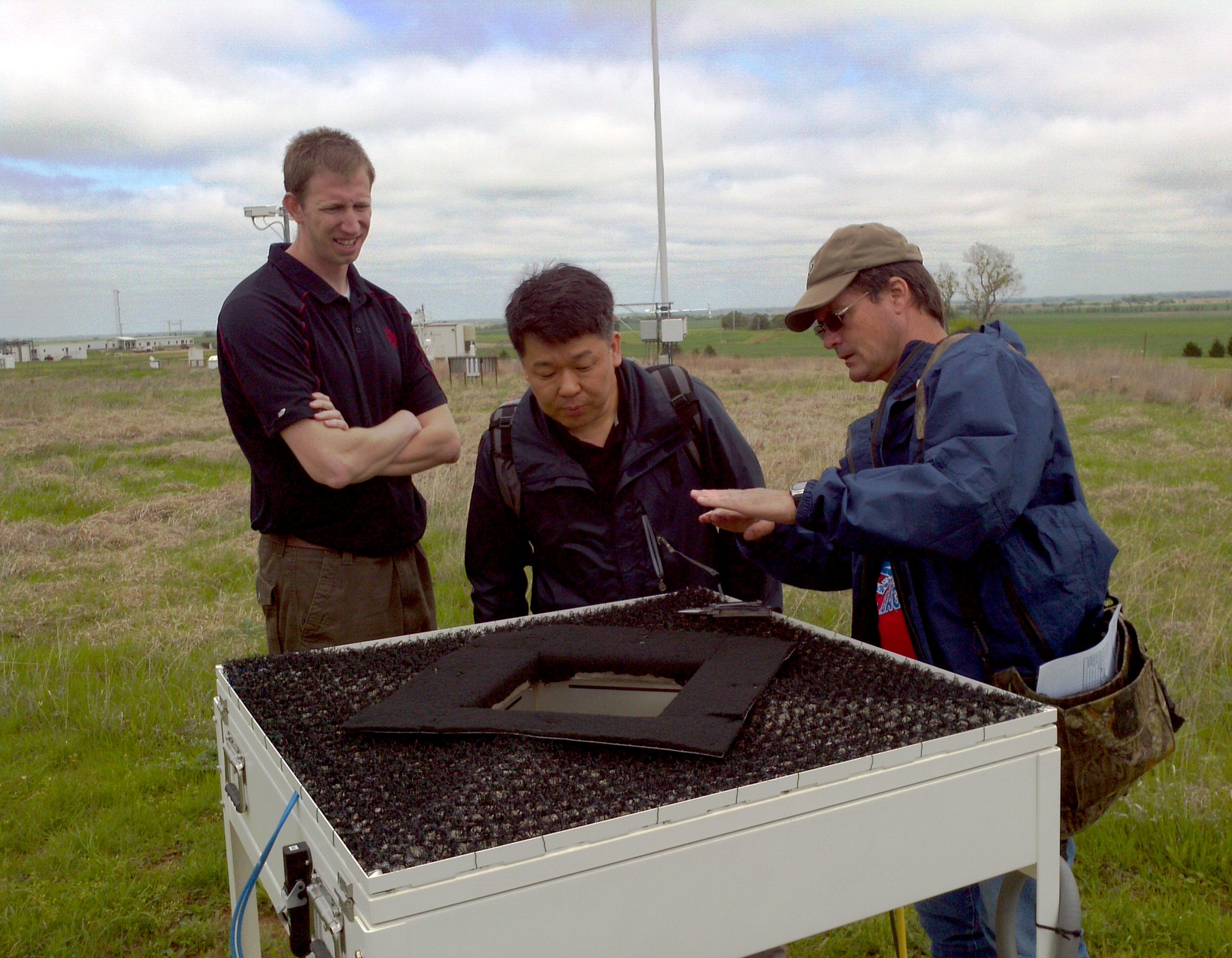
VDIS
Video Disdrometer
Baseline Instrument, Guest
A disdrometer measures the drop size distribution and velocity of falling hydrometeors.
The 2-dimensional video-disdrometer (VDIS) comprises video cameras capable of observing individual hydrometeors from views perpendicular to each other. Two CCD line scan cameras are directed towards the measurement area. Objects passing through the measurement area—which is determined by the cross-section of the two optical paths as seen from above—obstruct the light and are detected as shadows by the cameras.
Each camera contains a small embedded computer responsible for handling the data-capture process, analysis of the data, and their conversion and compression into a format suitable for further processing. Subsequently the data are transferred to the computer used for instrument control and final analysis.
In order to identify individual precipitation particles by matching their views as seen by each of the cameras, it is necessary to synchronize the shutter and control both cameras with a synchronous line trigger signal.
To reconstruct observables like falling velocity, oblateness, etc. from the datastreams of the two cameras, the two optical paths are displaced vertically by about 6mm, typically. Measuring this distance and adjusting the background illumination are the two major calibration and maintenance tasks necessary for successful operation of the device.
Contact
View all contacts-
Zeen ZhuLead Mentor Brookhaven National Laboratory
Related Data Announcements
References
View all references- Zhu et al. Two-Dimensional Video Disdrometer (VDIS) Instrument Handbook. 2025. 10.2172/2575719.
- Wang et al. Analysis of Three Types of Collocated Disdrometer Measurements at the ARM Southern Great Plains Observatory. 2021. 10.2172/1828172.
Locations
Keep up with the Atmospheric Observer
Updates on ARM news, events, and opportunities delivered to your inbox
ARM User Profile
ARM welcomes users from all institutions and nations. A free ARM user account is needed to access ARM data.


















